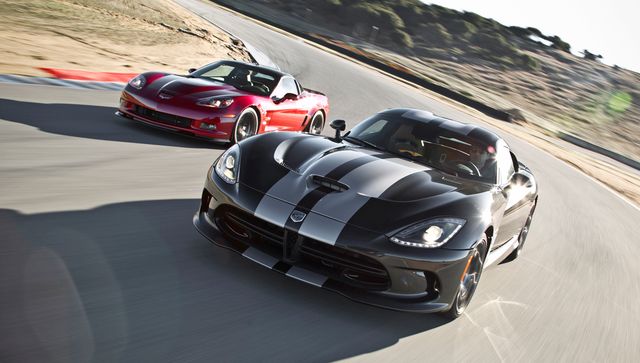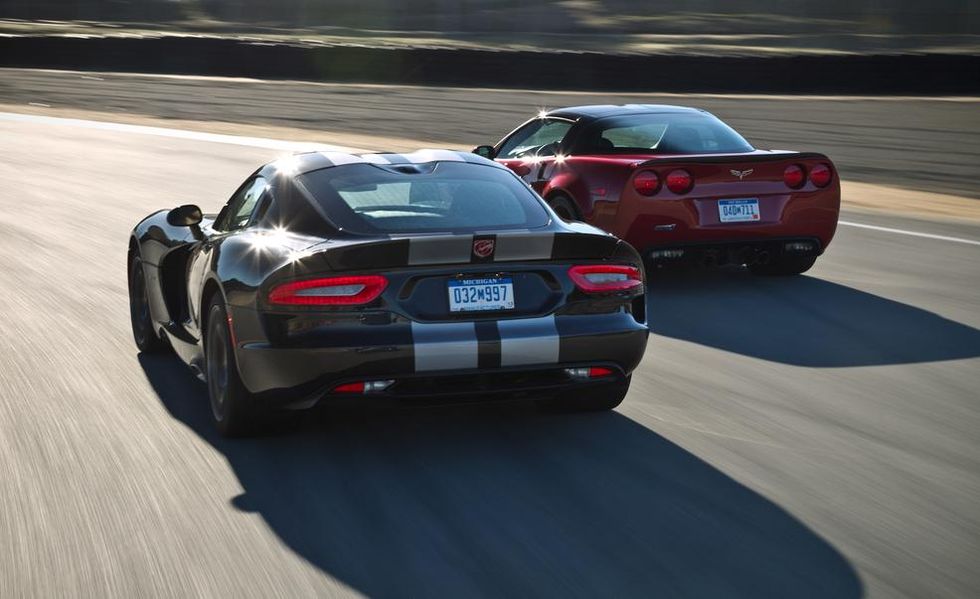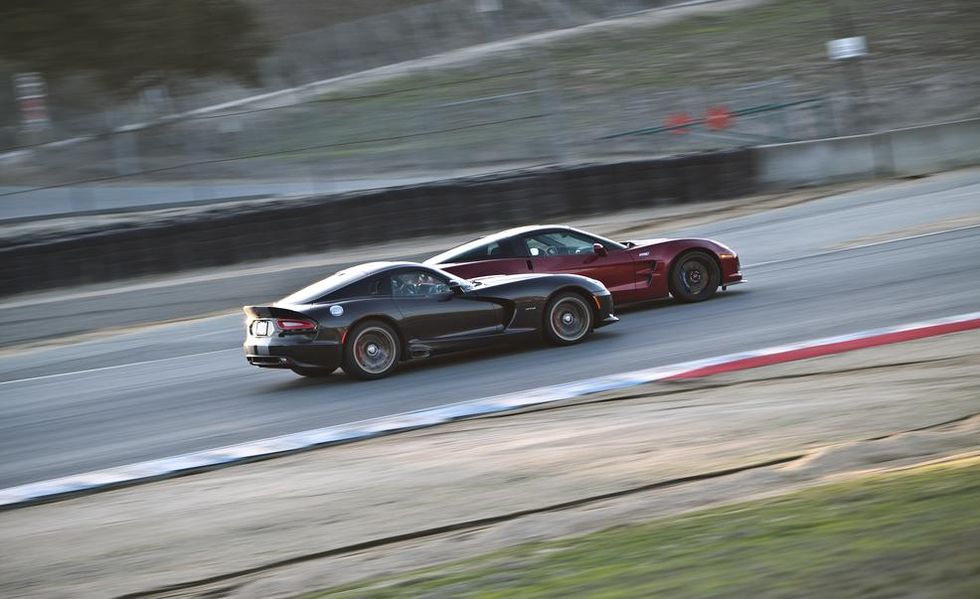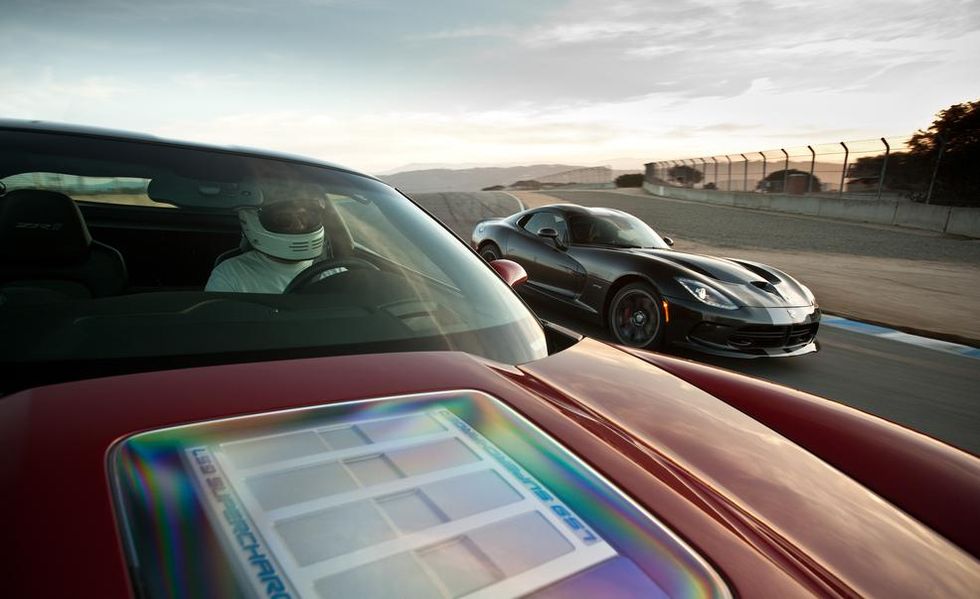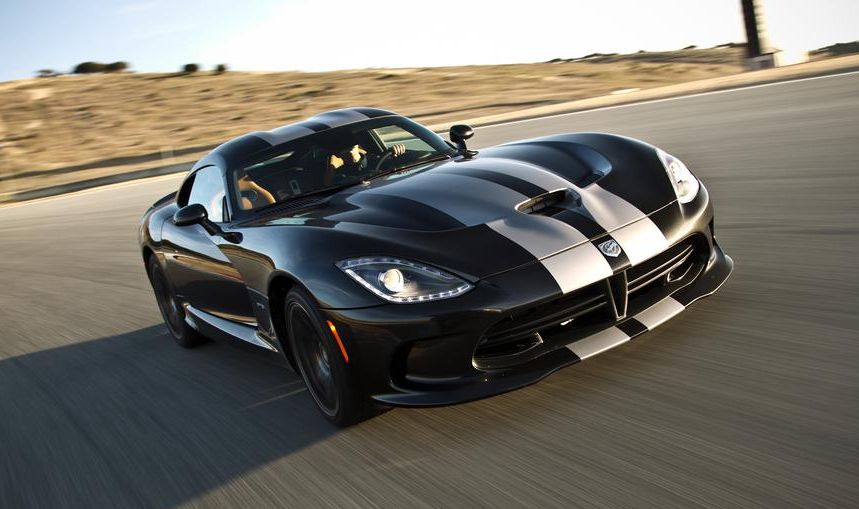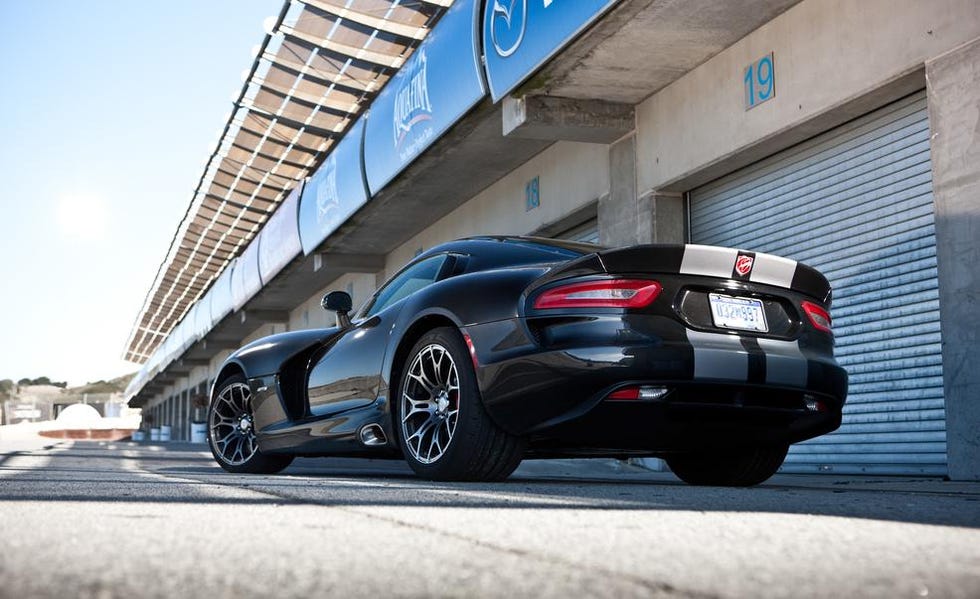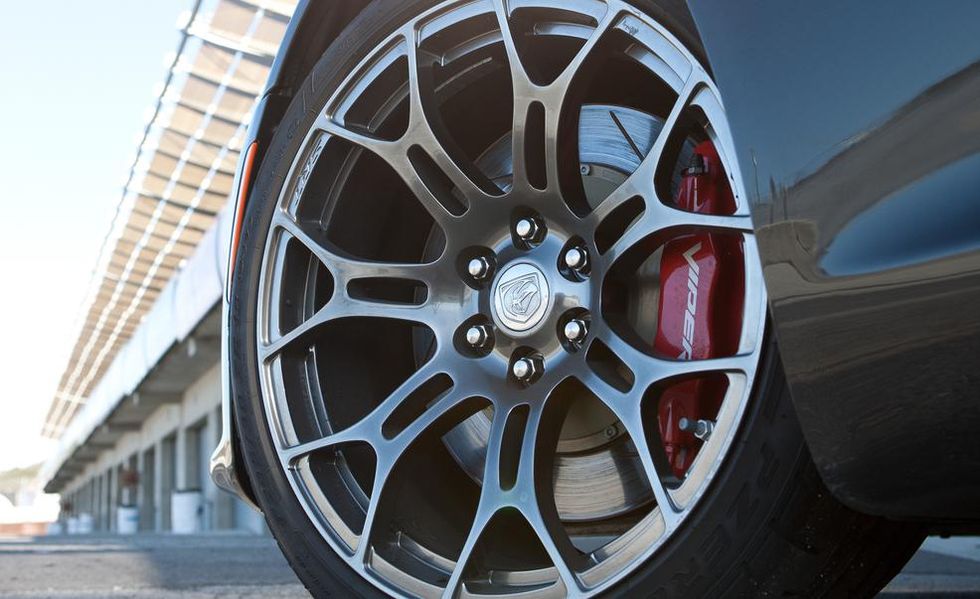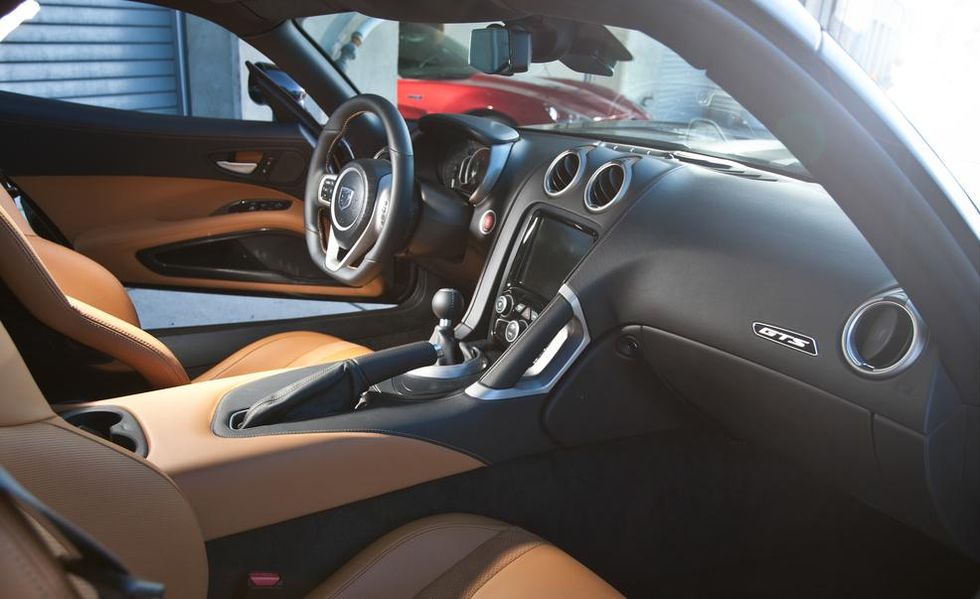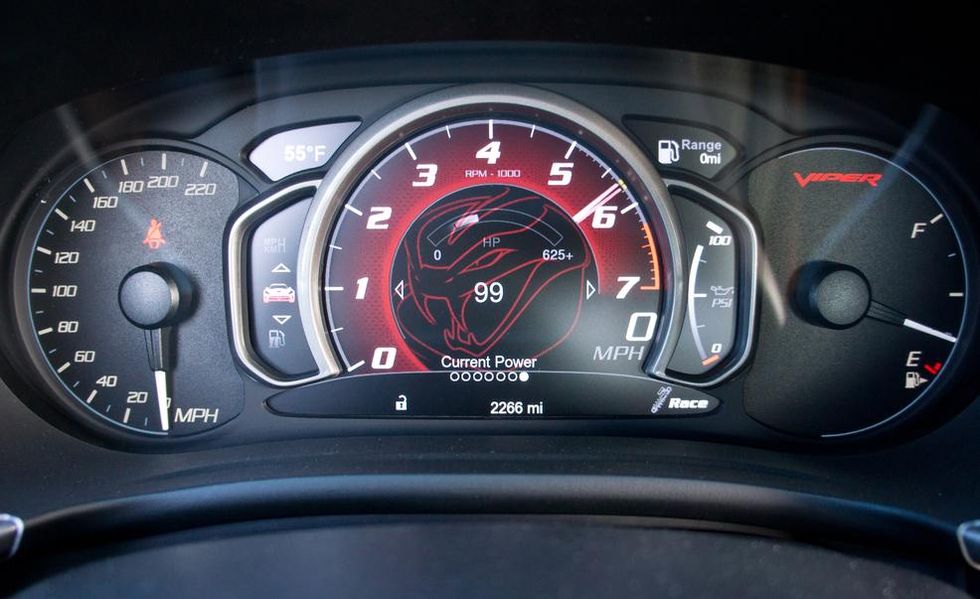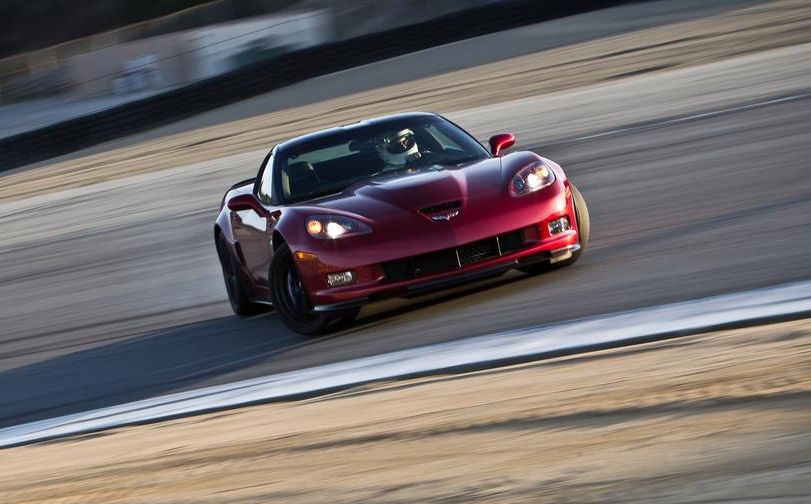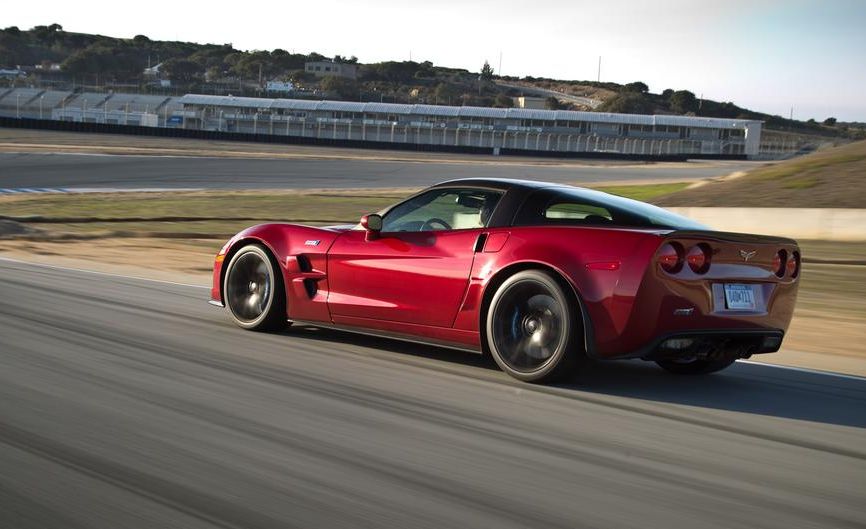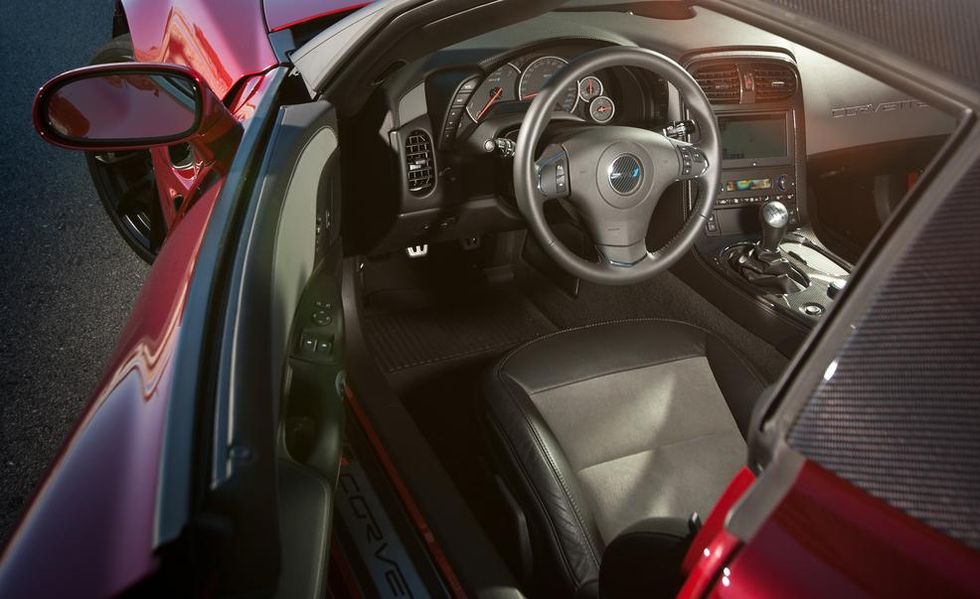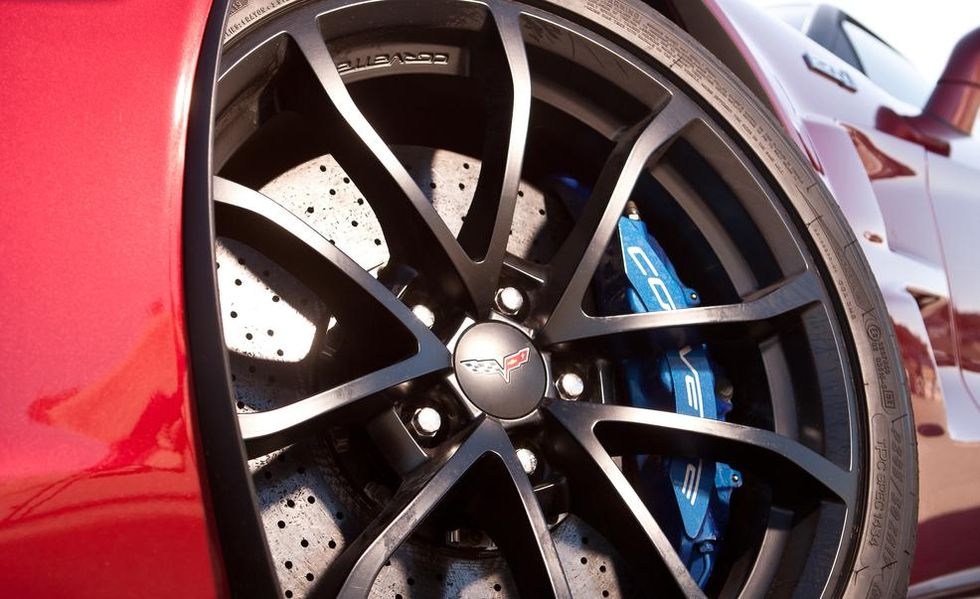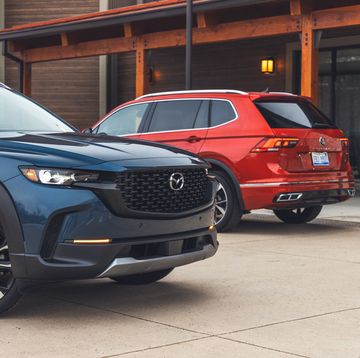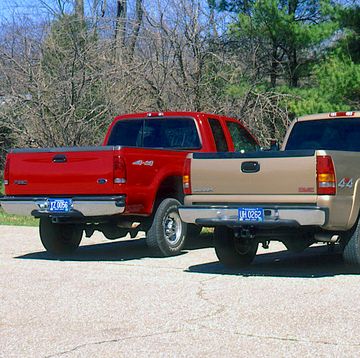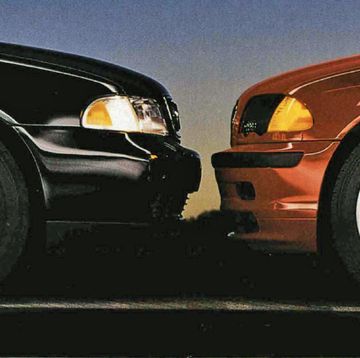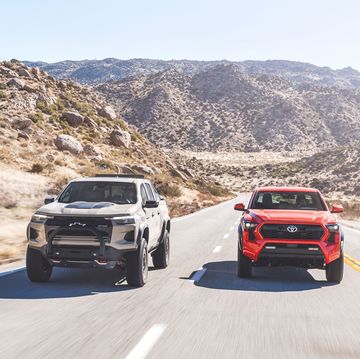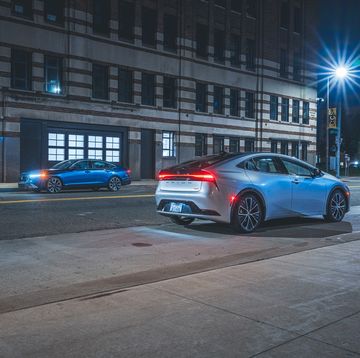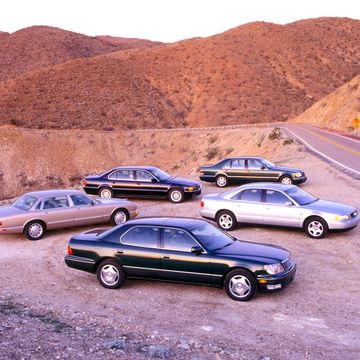From the February 2013 issue of Car and Driver.
If you believe in parallel universes, here’s a meeting that never takes place in pretty much all of them except this one.
Back in 2008, Chrysler was a financial boat anchor bumping along the bottom and looking to spin off the Viper’s nuts, bolts, and name for quick cash. Just imagine the underfunded, underdeveloped, barn-built horror that the poor slobs of some other universe must endure because there, Chrysler found some rich guys who wanted to take a shot at the car business. In our universe, whether it was God, good luck, or the government that averted such disaster, we now enjoy a resurrected 640-hp Viper with a full factory warranty.
The Corvette also faced its own mortality during GM’s recent existential crisis. But in this universe, it lives on in a seventh generation starting later this year. While we await the many permutations of the C7, including (we hope) another ZR1, we wanted to see how the new Viper rates against its arch nemesis and direct competitor for the title of America’s foremost supercar, the one that best brings big-bore raucousness into modernity.
Why, you ask? Because these cars have almost identical power and nearly identical gearing, and a mere three pounds separate their curb weights. Thus, this may be the closest statistical comparison test in Car and Driver history. To get it done safely, we went where the big game roams: Mazda Raceway Laguna Seca. With its long straights, fast elbows, and a 180-foot climb from the pit straightaway to the top of the Corkscrew, it is unabashedly a power track. For such a scene, our two protagonists come from central casting.
If you’ve been following breathlessly our recent Viper coverage, you know that Chrysler has built an all-new car that is strikingly familiar. Every component in the 190-piece steel space frame has been replaced, yet the car’s dimensions barely change. Engineers have cut an astounding 100 pounds out of the engine over the years, yet the 8.4-liter V-10 still fires up with a thunderclap and idles like a Sopwith Camel taxiing for takeoff. Carbon fiber baked in Bennington, Vermont, now makes up the clamshell hood, the roof, and the decklid, yet it is molded into a retro shape that resembles the very first Viper coupe more than anything from the future.
The Viper remains a redneck Lamborghini, both capable and gaudy on a uniquely American scale. But it also is hugely improved, from its more-closely spaced gear ratios to a suspension that has been reorganized to be more neutral and willing to change direction. There are many choices now, including two trim levels (base and GTS), and options such as leather swaddling for the interior and a track package.
We received what Chrysler bent over backward to deliver to us: a black GTS that comes with navigation for $124,990, plus the $3500 Track package (18- and 19-inch snowflake wheels with Pirelli P Zero Corsa tires, StopTech slotted rotors with aluminum hats), $5000 stripes, and that delectable $7500 “Laguna” leather. Basically, it’s the works, plus a gas-guzzler tax and delivery, for $140,990.
What is there to say about the ZR1 that hasn’t been said? Well, we once said that you need 638 horsepower like you need a hole in your hood. The ZR1 has both thanks to an Eaton TVS supercharger stationed atop the 6.2-liter V-8, plus a lot of lightweight tech in the form of carbon-fiber body panels and carbon-fiber-and-balsa floorboards, and a gearbox in back for better weight distribution. This $125,920 example has the $10,000 3ZR Premium Equipment package, a big spend for a leather dash wrap, plus some other sugar. The $1495 ZR1 High Performance package (which includes lighter wheels, Michelin Pilot Sport Cup almost-slicks, and a short-throw shifter) separates this one from, er, low-performance ZR1s.
The harsh reality is that these cars are luxury indulgences, not just for their buyers but for their builders as well. They consume time and resources and tend to return little to the corporate treasury despite their big price tags. In the parallel universe where car companies are run by people entirely dispassionate about cars, the ZR1 and Viper don’t exist. And we were never here.
2nd Place:
SRT Viper
Everything about a Viper meets our definition of an exotic. Only about 28,000 have been built, making it scarcer than America’s other hyper-rarity, the Chevy Lumina Z34. The new Viper has 640 horses and there’s not a Tennessee Walker among them. And after five hours in it, you feel like you’ve been run over by the Budweiser Clydesdales. Your ears ring, your head pounds, and your heart palpitates. If you don’t wear socks, you might even brand red rings into your ankles with the side pipes.
HIGHS: As exotic as a Texas Democrat, refined and improved in every respect, sounds like an air raid during the Great War.
LOWS: Italian torture devices for seats, sometimes boomy exhaust, brake fade, less-accessible performance than the Vette's.
VERDICT: America's Lamborghini remains a thrilling, intimidating challenge.
But you knew all that already. Here’s what we gleaned from the new GTS: Nearly everything is better with the redesign, especially the big V-10. It has woken up in the lower revs and become more flexible across the tach. It answers with more vigor to the prod and responds less like a fat man being pulled out of a chair. The new aluminum flywheel gets some credit, as do new intake runners and a reprogrammed throttle.
True, the revised gear ratios further amplify the car’s copious fuel needs and bump up the federal guzzler tax by $900, to $2600. But that’s all we’ll say about consumption because it’s a Viper. And because it’s an acceptable sacrifice.
Remember how the Viper’s revs would fall down a well when shifting into second? And how sixth gear was useless below 80 mph? No? Take our word for it. Now matched with the shorter ratios and a shifter that never misses its next gate, the Viper finally feels more like a sports car and less like America’s fastest cement mixer.
At 3.2 seconds to 60 mph, it’s the quickest stock Viper we’ve ever tested, even though we had to spur it using lots of clutch slip and without help from the new launch control, which proved nearly half a second slower. The rest of the Viper’s stats are equally enthralling: 11.5 seconds in the quarter-mile and 1.02 g’s on the skidpad. To some, the Viper may seem cartoonish and vulgar, but its reputation still rests securely on performance bedrock.
Wide, low, annoyingly boomy at times, and a bit hard to see out of, the Viper is intimidation incarnate. Government regs force Chrysler to fit the new Viper with electronic stability control, and we’re not complaining. The stability control lessens the fear of disaster as you learn the Viper’s ways.
Four settings come with the GTS trim, including full on, full off, sport, and track. The Viper’s emergencies-only track mode helped us around Laguna, staying quiet most of the time and stepping in with gentle strategic braking only to prevent calamity, then quickly stepping out again. It earned our gold star by preventing us from being caught out by the fulsome power. Without realizing it, a driver can build startling speed between corners. Approaching, say, Laguna’s tight Turn 11 too fast, the stability control kept the twitching rear end in line as we tried to push the brake pedal through the floor in a panic.
Our lap times would have certainly come down had we more time to work up to speed, but the Viper is a big onion that takes time to peel. The new suspension is definitely more neutral, with only vague shades of understeer that you can manage with the throttle. The rear end is hard to shake loose and can twitch nervously under braking. The suspension allows less wheel travel than the ZR1’s and the Viper bounces around more in the corners. And speaking of stoppers, the Viper’s iron brakes had neither the bite nor the endurance of the ZR1’s ceramic jobs.
Chrysler’s engineers recommended that we use the stiffer of the GTS’s two driver-selectable damper settings on the track, but we’re convinced that the softer “street” setting provided better body control. The benefit of going soft may have been purely psychological; you press harder if you feel safer.
Once, the Viper’s gauges were just holes punched in the dash. Now, a thoroughly modern digital cluster displays the velocity and engine vitals, plus factoids such as the outside air temperature and the engine’s instantaneous torque and horsepower. It’ll even show you your e-mail. In a Viper! The updated interior, including the 8.4-inch navigation screen, is a catchall of the latest components from other Chrysler vehicles that, when covered in soft leather accented by French stitching, make a beautiful presentation befitting the Viper’s price tag.
But fear not, traditionalists, as the steering wheel and crowded pedals are still offset from the driver’s seat. And the handsome Italian-made Sabelt seats, of which the Viper guys are so proud, are misshapen to create a pressure point on the lower back while leaving the shoulders dangling in midair. Possibly, they are revenge for the American invasion of Anzio. Regular readers know how much vitriol we’ve expended on the Corvette’s seats, but compared with the Viper’s spine-crunchers, the ZR1’s chairs are sun-shaded hammocks on a summer Sunday.
Not that we’re griping. Much. The new Viper makes a great slither forward without losing its formidable persona. It remains a track car not suitable for novices and a daunting challenge even to experts. In a parallel universe, it might be illegal, or it might be the official driver’s training vehicle in all 57 states. Who knows?
1st Place:
Chevrolet Corvette ZR1
Really, what can this old, retired dog teach the fresh newcomer? Well, a few things, starting with the accessibility of its performance.
We went quicker and we did it sooner in the Corvette, and for us that’s the definition of a superior supercar. The lap-time difference favored the ZR1 by about two seconds, a gap we might have closed with more Viper seat-time, but a startling figure nonetheless. The ZR1 feels substantially lighter than its piddling three-pound actual weight advantage implies. It feels smaller and more agile, though its wheelbase is a yawning 6.9 inches longer. Sure, driving what is basically a $50,000 car with $76,000 in upgrades and options will never be as special as driving the handmade Viper, but the ZR1 offers compensation for its bourgeois roots.
HIGHS: Easier to get friendly with on a track, all-day usable seats, braking is incredible.
LOWS: Production has ceased, still smells like a body shop inside, the interior is...oh, nevermind!
VERDICT: Goodbye, farewell, and amen.
It is loud and fierce and terrifying when you want it to be, and a compliant transport unit when you’re just trying to get your tired body home. It is easier to see out of, easier to carry stuff with, and easier to slip past crowds in. It is the supercar with a rheostat for when full voltage isn’t needed.
This is our final test of a C6, the last word you’ll get from us on this particular generation of the Plastic Fantastic. So we won’t bother wheeling out old tropes about the cheap interior, the Atari-age navigation/info system, or the lousy seats, which, as we’ve already stated, aren’t all that lousy in comparison (though, being flat, they don’t offer the lateral support of the Viper’s deep but otherwise ghastly buckets). We expect all sins to be addressed in the C7.
Ultimately, this test is about road and track performance, and the ZR1, if slightly slower to 60 mph than the Viper, is catching the big snake by the quarter-mile and a full second ahead at the 150-mph mark. It also brakes deeper and the brakes last longer. Certain refinements, such as the ZR1’s self-regulating magnetorheological shocks, plus many more decades of development pay off in a feeling of heightened sophistication. Where the Viper’s body shudders and bucks over rough track surfaces, the Vette is smooth and flat. Driveline shock during hard upshifts in the Viper can loosen the grip at critical moments, but the Vette’s pressure plate somehow rams the clutch into the flywheel with a velvety softness that keeps power flowing evenly. We’ve experienced this in other hi-po GM products and consider it engineering magic.
Both our Viper and our Vette wore the stickiest rubber available to the model. On run-flat Michelin Pilot Sport Cups, which are just a few shallow cuts away from slicks, the ZR1 turns more sharply and with less scrub than the Viper on its more deeply grooved Pirelli P Zero Corsas. That alone may be worth a second in the lap times.
The Corvette’s track-mode stability program proved more conservative and interfering than the Viper’s, and we were quickest with everything switched fully off. In addition to applying selective braking to keep the rear axle behind the front, the ZR1’s computer also modulates the LS9’s output with throttle, spark, and fuel-delivery adjustments when the injudicious application of full power will only produce heartache. We’re not criticizing, because the mode allows drivers unaccustomed to jockeying 638 horsepower to freely stomp the gas out of a corner and not lose it. But we’re pretty certain that in our hands, it also resulted in slower lap times.
Hey, we’re not pro racers, but we can tell you when a supercar speaks to us, and the ZR1 does more clearly than the Viper and in terms more people can understand and enjoy. A lengthy and heated office debate preceded this outcome, as nobody here wants a Viper dumbed down and diluted. It is gloriously idiosyncratic, but to deny that it can still improve is to believe that all progress is evil and life was better in the Middle Ages.
Meanwhile, to the ZR1, we say: Farewell, old friend, and we thank you.
Specifications
Specifications
2013 Chevrolet Corvette ZR1
Vehicle Type: front-engine, rear-wheel-drive, 2-passenger, 2-door hatchback
PRICE
Base/As Tested: $113,575/$125,920
ENGINE
supercharged pushrod 16-valve V-8, aluminum block and heads, port fuel injection
Displacement: 376 in3, 6162 cm3
Power: 638 hp @ 6500 rpm
Torque: 604 lb-ft @ 3800 rpm
TRANSMISSION
6-speed manual
CHASSIS
Suspension, F/R: control arms, leaf spring, anti-roll bar/control arms, leaf spring, anti-roll bar
Brakes, F/R: 15.5-inch vented, drilled ceramic disc/15.0-inch vented, drilled ceramic disc
Tires: Michelin Pilot Sport Cup ZP
F: 285/30ZR-19 (87Y)
R: 335/25ZR-20 (94Y)
DIMENSIONS
Wheelbase: 105.7 in
Length: 176.2 in
Width: 75.9 in
Height: 48.7 in
Passenger Volume: 52 ft3
Trunk Volume: 22 ft3
Curb Weight: 3353 lb
C/D TEST RESULTS
60 mph: 3.4 sec
100 mph: 7.7 sec
1/4-Mile: 11.6 sec @ 128 mph
150 mph: 16.8 sec
Rolling Start, 5–60 mph: 3.9 sec
Top Gear, 30–50 mph: 6.1 sec
Top Gear, 50–70 mph: 5.1 sec
Top Speed (mfr's claim): 205 mph
Braking, 70–0 mph: 143 ft
Roadholding, 300-ft Skidpad: 1.06 g
C/D FUEL ECONOMY
Observed: 16 mpg
EPA FUEL ECONOMY
City/Highway: 14/21 mpg
---
2013 Dodge SRT Viper GTS
Vehicle Type: front-engine, rear-wheel-drive, 2-passenger, 2-door hatchback
PRICE
Base/As Tested: $124,990/$140,990
ENGINE
pushrod 20-valve V-10, aluminum block and heads, port fuel injection
Displacement: 512 in3, 8382 cm3
Power: 640 hp @ 6200 rpm
Torque: 600 lb-ft @ 5000 rpm
TRANSMISSION
6-speed manual
CHASSIS
Suspension, F/R: control arms, coil springs, anti-roll bar/control arms, coil springs, anti-roll bar
Brakes, F/R: 14.0-inch vented, slotted disc/14.0-inch vented, slotted disc
Tires: Pirelli P Zero Corsa
F: 295/30ZR-18 (94Y)
R: 335/30ZR-19 (99Y)
DIMENSIONS
Wheelbase: 98.8 in
Length: 175.7 in
Width: 76.4 in
Height: 49.1 in
Passenger Volume: 48 ft3
Trunk Volume: 15 ft3
Curb Weight: 3356 lb
C/D TEST RESULTS
60 mph: 3.2 sec
100 mph: 7.6 sec
1/4-Mile: 11.5 sec @ 126 mph
150 mph: 17.8 sec
Rolling Start, 5–60 mph: 4.4 sec
Top Gear, 30–50 mph: 6.6 sec
Top Gear, 50–70 mph: 6.0 sec
Top Speed (mfr's claim): 206 mph
Braking, 70–0 mph: 146 ft
Roadholding, 300-ft Skidpad: 1.02 g
C/D FUEL ECONOMY
Observed: 17 mpg
EPA FUEL ECONOMY
City/Highway: 12/19 mpg
